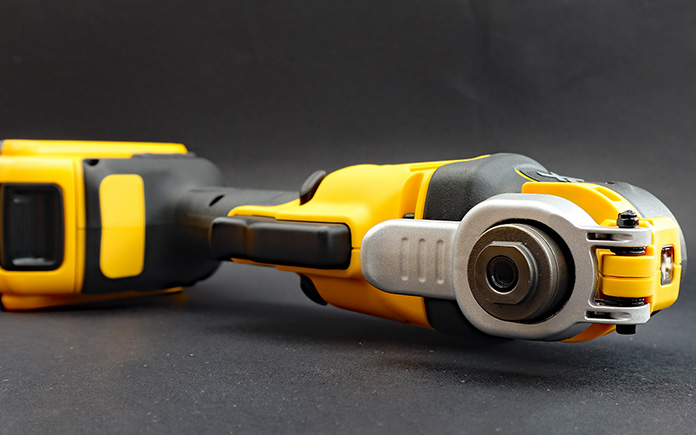
The latest advancement in power tools is the use of brushless motors. But what exactly is a brushless motor, and what are its benefits?
To fully understand this technology, let’s take a quick look at the existing technology: brushed motors.
How Brushed Motors Work
In a typical electric motor, there are permanent magnets (stator) on the outside, and a spinning armature (rotor) on the inside. The rotor contains an electromagnet. When electricity passes through the electromagnet, it creates a magnetic field inside the rotor that attracts and repels permanent magnets in the stator.
However, to make the motor spin 360 degrees, it’s necessary to change the polarity of the electromagnet, and a pair of brushes helps do that.
Motor brushes aren’t brushes at all, but small blocks of carbon connected to a compression spring. The brushes press against spinning electrodes attached to the rotor. As the electromagnet spins, the brushes change the magnetic polarity.
Brushed motors are reliable, relatively efficient and inexpensive to manufacture, but they have distinct limitations.
First, carbon brushes eventually wear out and must be replaced. As the motor runs, the brushes are constantly breaking and then making electrical contact, which produces sparking and noise.
Friction caused by the brushes rubbing against the spinning rotor makes the motor run hotter. And brushes limit the ultimate top-end speed of the motor.
For these reasons and others, all major tool manufacturers have now added brushless motors to their line of portable power tools.
Brushed vs. Brushless Motor
In a brushless motor, there are no brushes of any kind and the motor itself is turned inside out: permanent magnets are moved to the rotor, and electromagnets are connected to the stator.
Then, in place of brushes, a computer, connected to high-power transistors, charges the electromagnets as the motor turns.
There are many advantages of a brushless motor. For instance, there are no brushes to wear out or replace, the motor runs quieter and cooler, there’s no electrical sparking, and runtime for cordless tools is increased up to 50 percent over a comparable brushed motor.
Also, because a brushless motor is electronically controlled, it delivers the precise amount of power needed for the job.
For example, the motor can sense whether you’re drilling a ¼-inch-diameter hole in drywall or a 2-inch-diameter hole in a steel door, and then deliver the correct amount of torque (power).
In contrast, brushed motors run at top speed regardless of the job.
The Bottom Line
Okay, at this point I’m sure you’re thinking that brushless motors are just too fabulous; there must be a catch.
Well, there’s no catch exactly, but brushless motors do cost more to produce than traditional brushed motors.
However, the initial cost is often recouped through the tool’s greater efficiency and longer life.
And, as brushless motors become more commonplace, prices will eventually come down.




